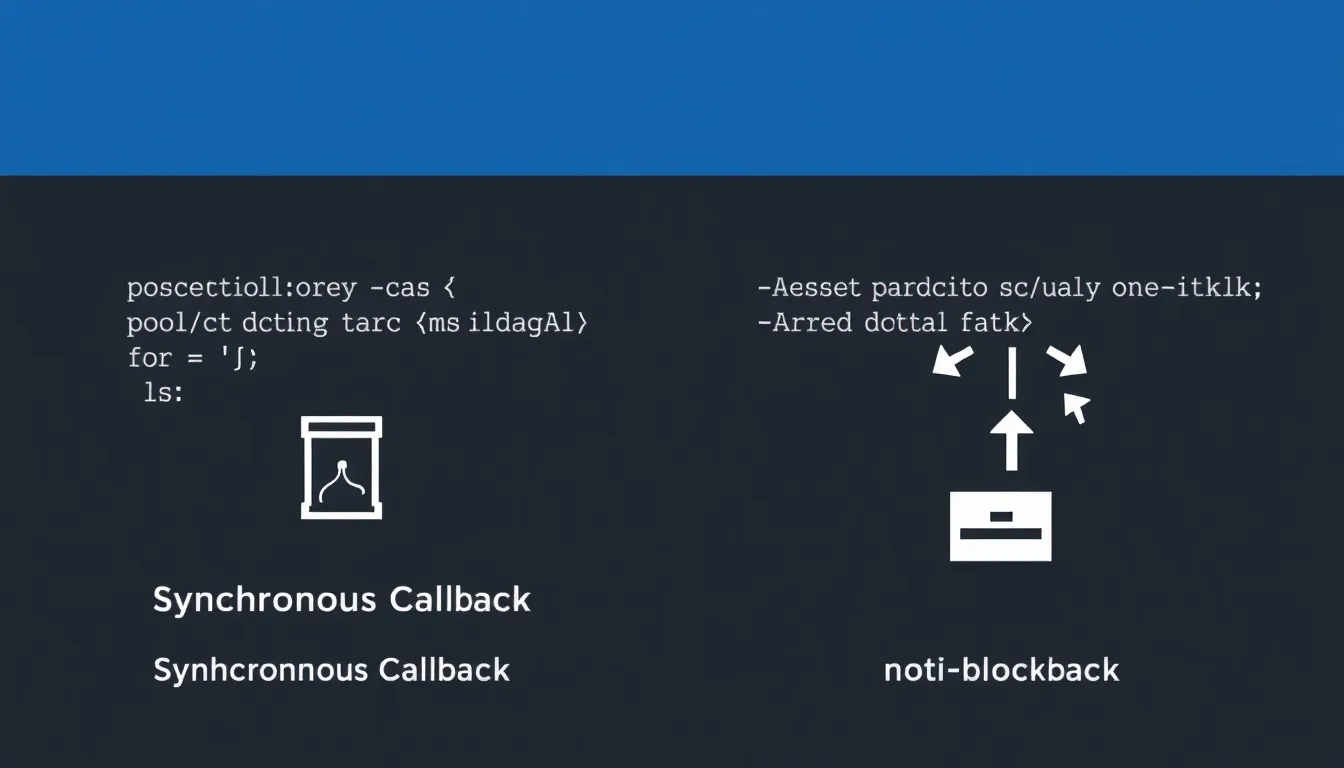Table of Contents
ToggleIn the world of JavaScript, callbacks play a crucial role in managing asynchronous operations. They allow developers to execute code only after a specific task is completed, enhancing the efficiency and responsiveness of applications. Understanding how callbacks work is essential for anyone looking to master JavaScript and create dynamic web experiences.
Callbacks not only simplify complex code but also help avoid issues like “callback hell,” where nested callbacks can make code difficult to read and maintain. By grasping the concept of callbacks, developers can harness the full potential of JavaScript, leading to cleaner and more effective coding practices. Whether building simple scripts or intricate web applications, mastering callbacks is a foundational skill that can elevate a developer’s capabilities.
Understanding JavaScript Callbacks
Callbacks are functions passed as arguments to other functions, enabling code execution after a task completes. They play a vital role in managing asynchronous operations, allowing smooth and efficient web applications.
Definition of Callbacks
Callbacks refer to functions defined outside of another function but invoked within that function as needed. For example:
function fetchData(callback) {
// Simulate an API call
setTimeout(() => {
const data = "Data received";
callback(data);
}, 1000);
}
fetchData((result) => {
console.log(result); // Output: Data received
});
In this example, fetchData executes a callback once it retrieves data, illustrating how callbacks enable functions to communicate effectively.
Importance in Asynchronous Programming
Callbacks are crucial for asynchronous programming in JavaScript. They ensure code runs in the correct order, particularly when handling tasks like API requests or file operations. Without callbacks, applications risk executing code prematurely, leading to errors or unexpected behavior.
| Aspect | Description |
|---|---|
| Order of execution | Callbacks maintain the intended order, allowing subsequent tasks to wait for completion. |
| Error handling | They provide an opportunity to manage errors in asynchronous code flow effectively. |
| Improves responsiveness | Callbacks help keep user interfaces responsive by not blocking the main thread during operations. |
By utilizing callbacks, developers can avoid issues related to synchronous code execution, enhancing performance in complex web applications.
Types of Callbacks

JavaScript callbacks fall into two main categories: synchronous and asynchronous. Each type serves a distinct purpose in managing code execution.
Synchronous Callbacks
Synchronous callbacks execute immediately during the function call. They block further execution until the current operation completes. Examples include operations that don’t rely on external data, such as simple calculations or DOM manipulations. The following code snippet illustrates a synchronous callback:
function processData(data, callback) {
const processedData = data.toUpperCase();
callback(processedData);
}
processData('hello', function(result) {
console.log(result); // Outputs: HELLO
});
Asynchronous Callbacks
Asynchronous callbacks are used for operations that rely on external data or tasks that take time, such as API calls or file reading. These callbacks allow the program to continue executing without waiting for the task to finish. This enhances application efficiency and user experience. An example of an asynchronous callback is shown below:
function fetchData(apiUrl, callback) {
fetch(apiUrl)
.then(response => response.json())
.then(data => callback(data));
}
fetchData('https://api.example.com/data', function(result) {
console.log(result); // Outputs: [data from the API]
});
Through these callback types, JavaScript enables effective handling of both immediate and deferred operations, making it easier to build dynamic applications.
Implementing Callbacks in JavaScript
Implementing callbacks in JavaScript requires a clear understanding of their syntax and practical applications. These functions enhance code structure and facilitate asynchronous operations.
Basic Syntax
The basic syntax for a callback function involves passing a function as an argument to another function. Here’s the general structure:
function parentFunction(callback) {
// Perform some operations
callback();
}
In this example, parentFunction takes a callback parameter. To use a callback, define the function and then invoke it within the parent function:
function myCallback() {
console.log("Callback executed!");
}
parentFunction(myCallback);
This code executes myCallback after completing the operations in parentFunction. Understanding this syntax forms the foundation for implementing callbacks in various scenarios.
Common Use Cases
Callbacks find applications in several scenarios:
- Asynchronous Operations: Callbacks are vital in handling tasks like API requests. For example, using
fetchallows developers to pass a callback to process data once it has loaded.
fetch('https://api.example.com/data')
.then(response => response.json())
.then(data => {
console.log(data);
});
- Event Handling: Callbacks manage user interactions, such as button clicks or key presses. By attaching a callback to an event listener, developers can execute specific actions.
document.getElementById('myButton').addEventListener('click', () => {
console.log('Button clicked!');
});
- Array Methods: Many array methods, such as
map,filter, andreduce, utilize callbacks to process each element. For instance, themapmethod applies a callback to each array element and returns a new array.
const numbers = [1, 2, 3];
const doubled = numbers.map(num => num * 2);
console.log(doubled); // [2, 4, 6]
By employing callbacks, developers can create dynamic, responsive applications that handle complex tasks efficiently.
Advantages and Disadvantages of Callbacks
Callbacks offer both advantages and disadvantages in JavaScript programming, impacting how developers manage asynchronous operations.
Benefits of Using Callbacks
- Asynchronous Handling: Callbacks enable non-blocking execution, allowing programs to continue running while waiting for tasks, such as API responses, to complete.
- Controlled Flow: Callbacks maintain the order of execution, ensuring that functions execute in the intended sequence without interruptions.
- Error Management: Callbacks simplify error handling by passing error information as the first argument, allowing developers to address potential issues effectively.
- Event Handling: Callbacks facilitate responsive event handling in user interfaces, improving interaction and overall user experience.
- Code Reusability: Callbacks promote modularity, allowing functions to be reused across different contexts, enhancing code maintainability.
Potential Issues and Pitfalls
- Callback Hell: Deeply nested callbacks can make code difficult to read and maintain, complicating debugging and increasing the risk of errors.
- Complexity: Managing multiple asynchronous callbacks can lead to complex logic, making the codebase harder to comprehend and work with.
- Inversion of Control: Callbacks allow functions to dictate control flow, which can lead to unpredictable behavior if not managed correctly.
- Error Propagation: While callbacks facilitate error management, improper chaining can cause unhandled errors, resulting in application failures.
- Performance Overheads: Excessive use of callbacks, particularly in high-frequency operations, may introduce performance bottlenecks and latency issues.
Mastering JavaScript callbacks is vital for any developer looking to enhance their coding skills. By effectively managing asynchronous operations and ensuring smooth communication between functions, callbacks play a crucial role in creating responsive web applications. While they offer significant advantages like improved error handling and code reusability, developers must also be mindful of potential pitfalls such as callback hell.
By understanding both synchronous and asynchronous callbacks, developers can write cleaner and more efficient code, ultimately leading to better user experiences. Embracing these concepts equips developers with the tools needed to tackle complex tasks and build dynamic applications that meet modern demands.







